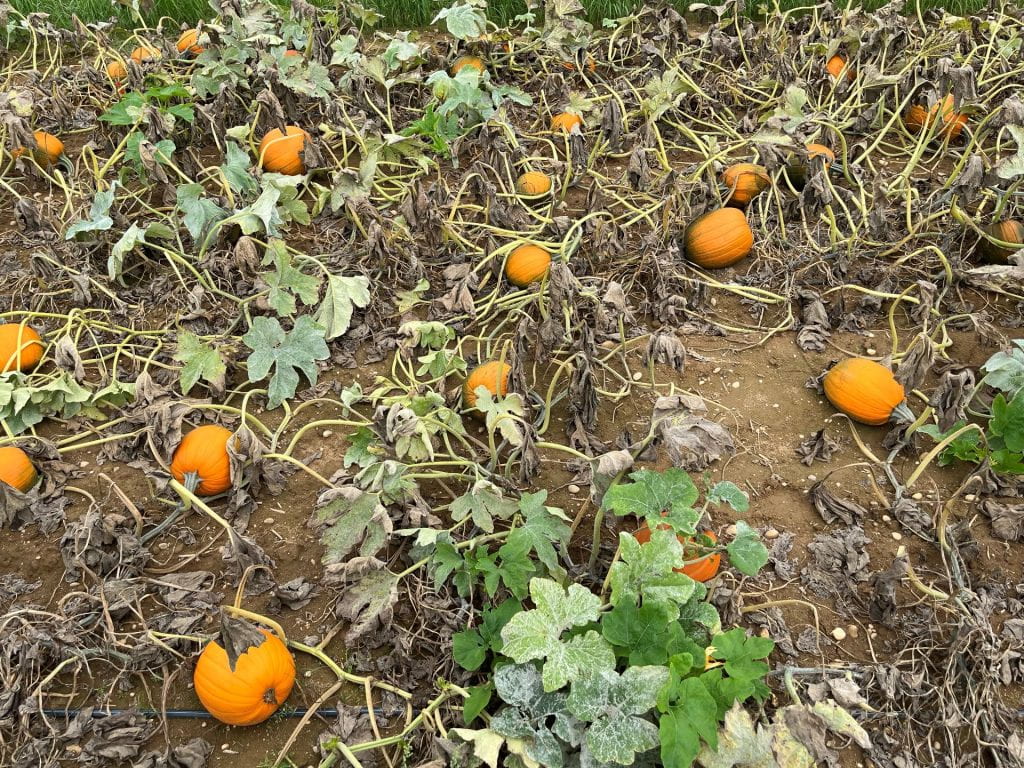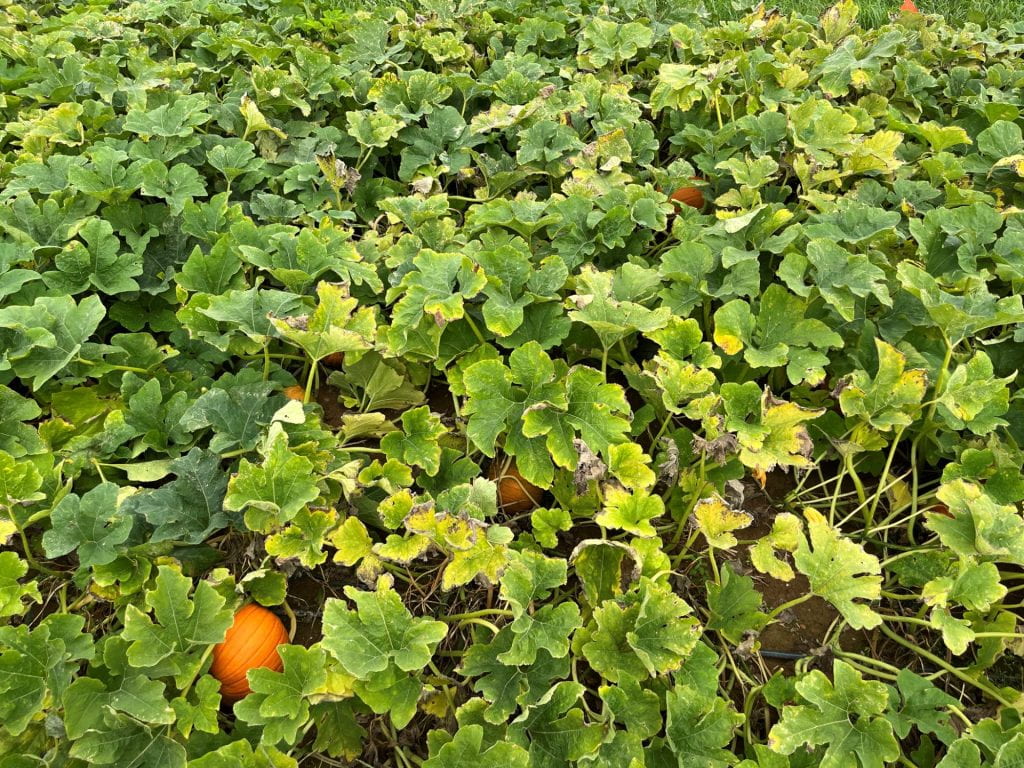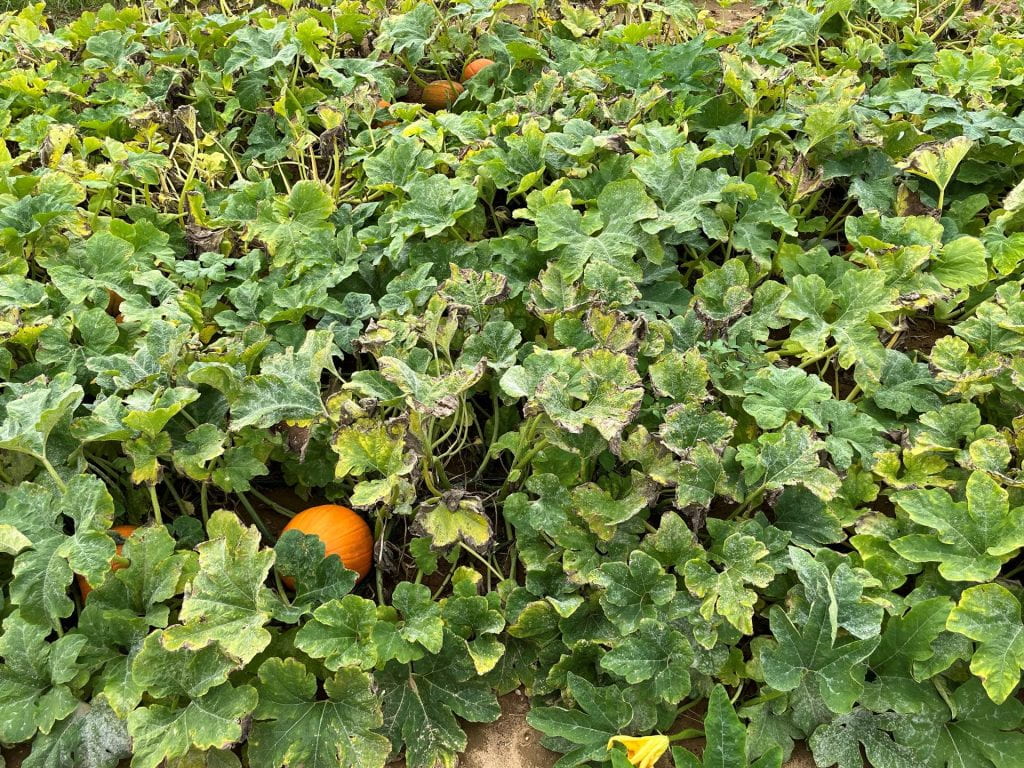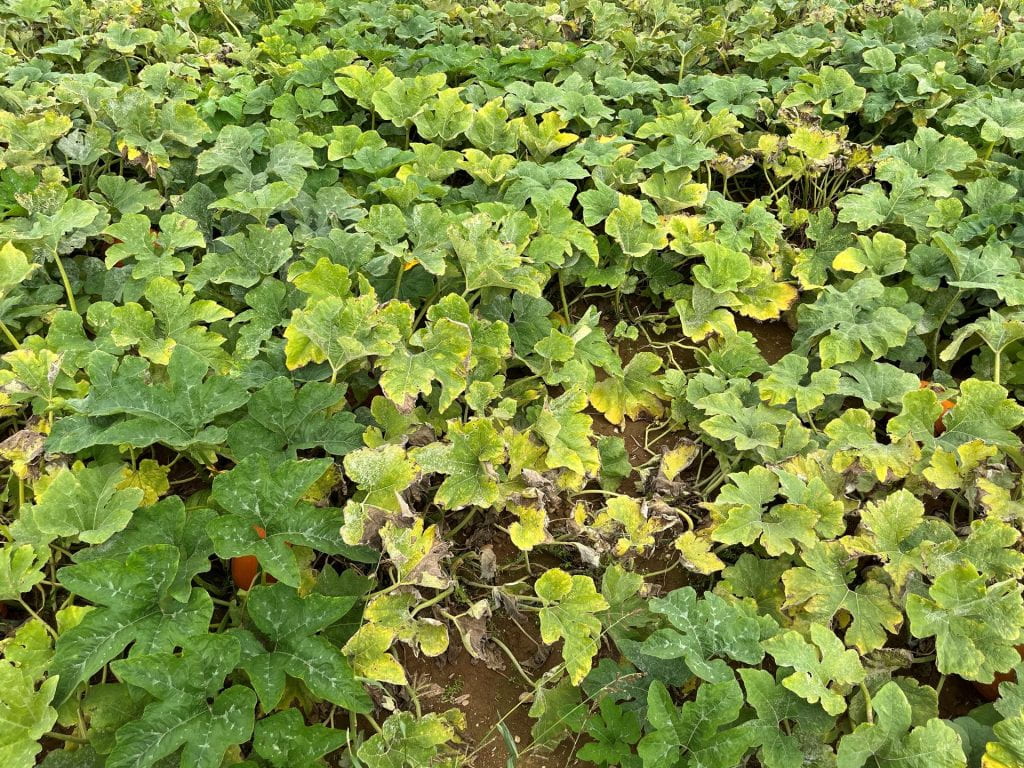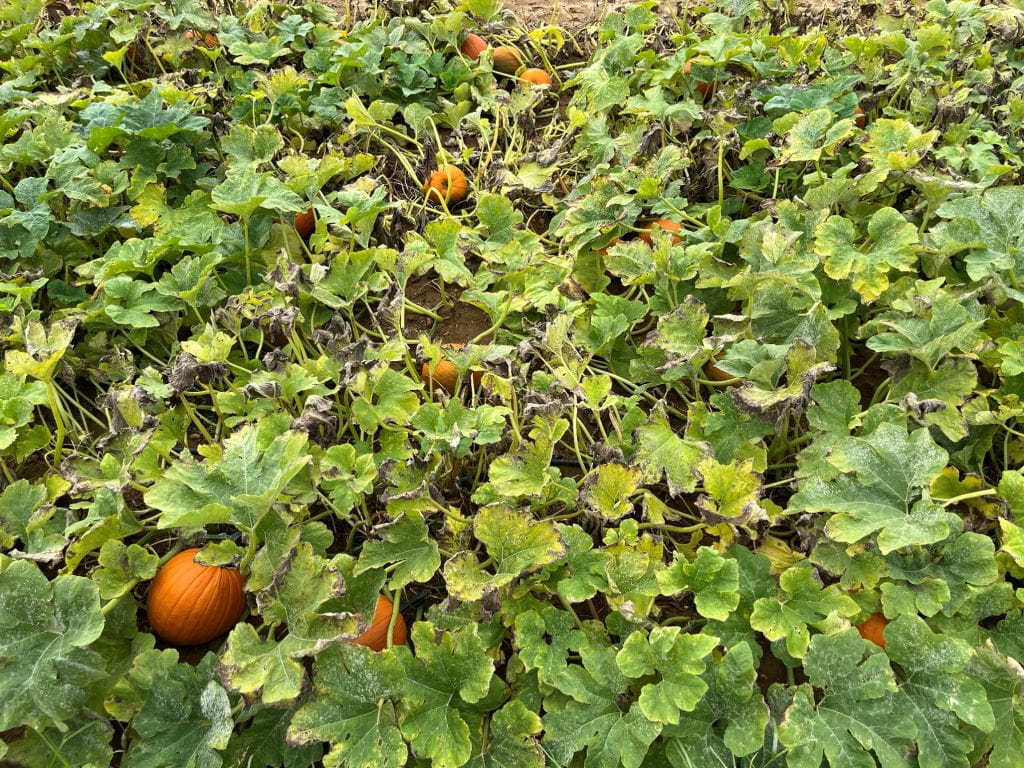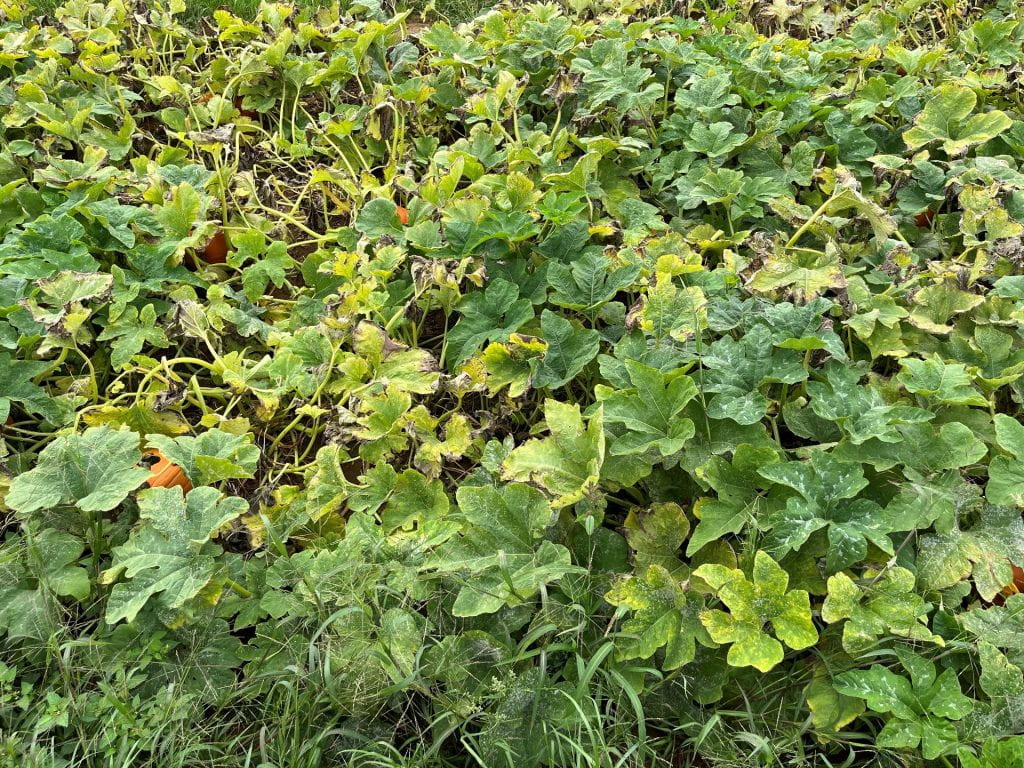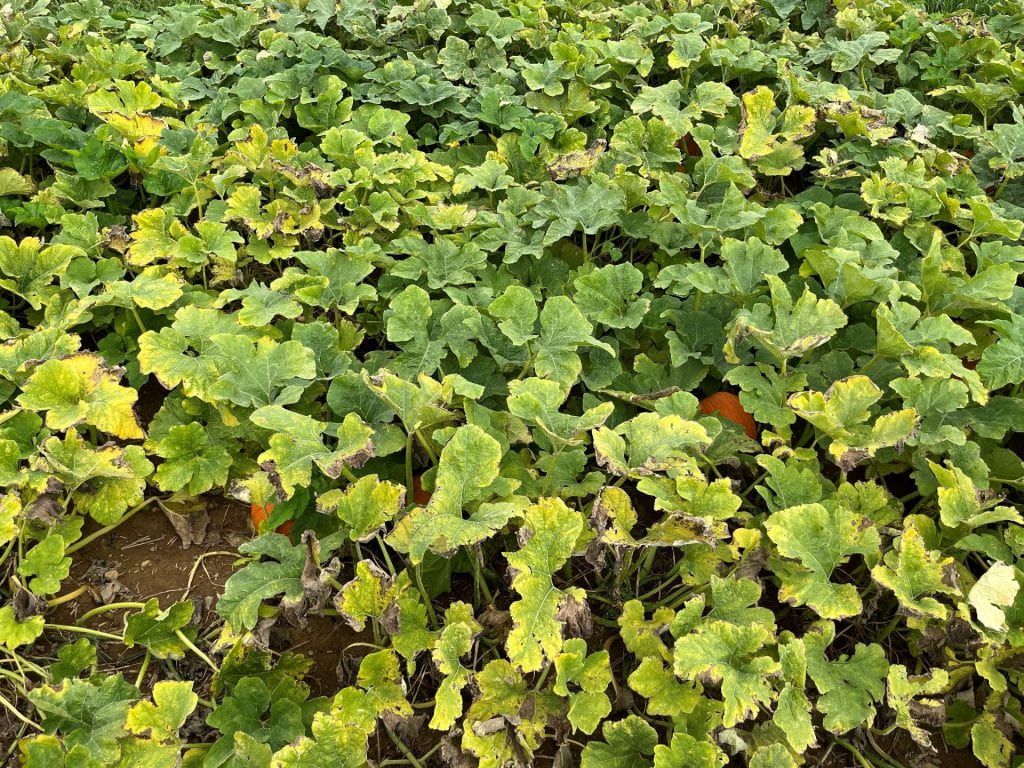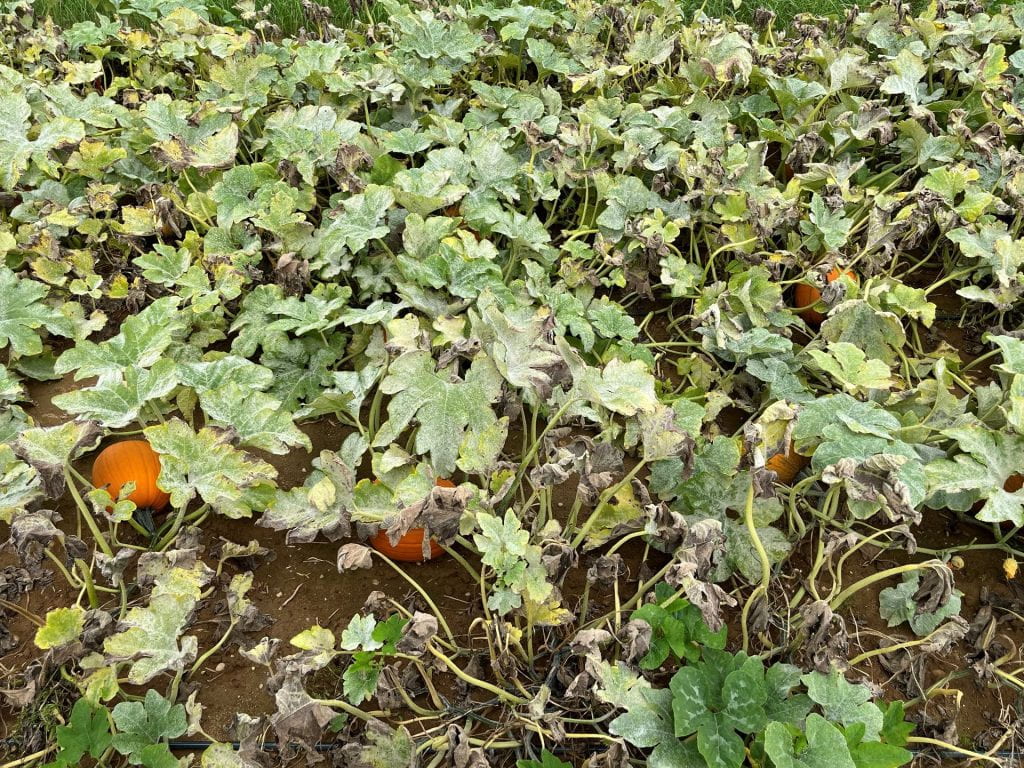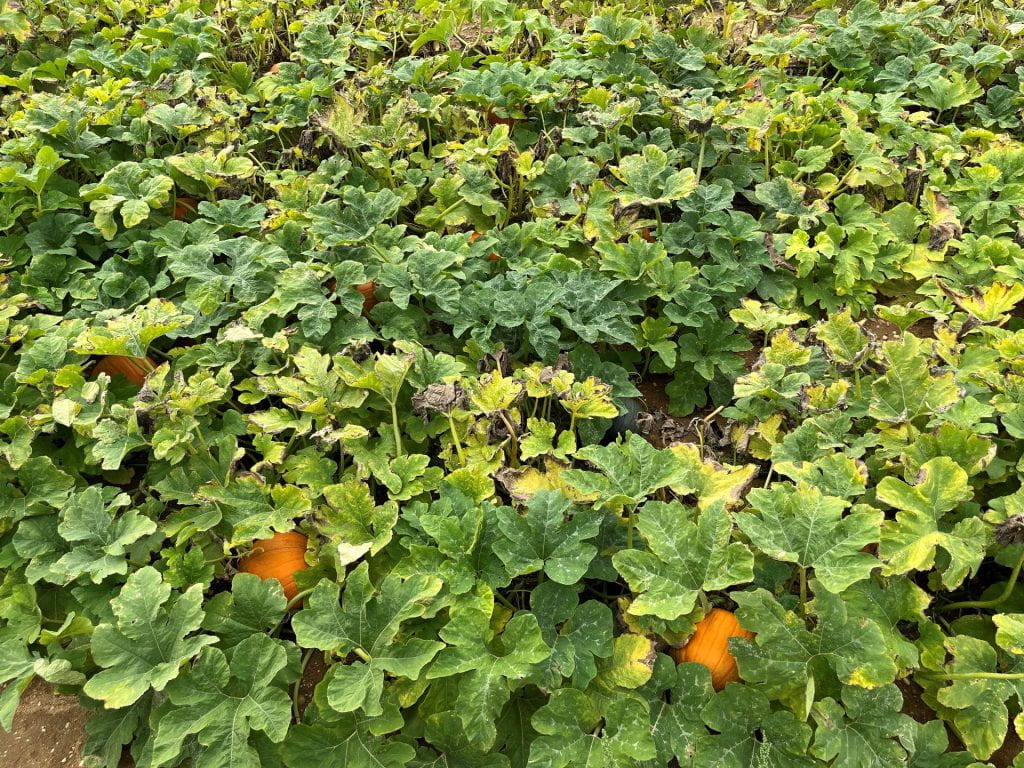The experiment was conducted in 2022 with ‘Gold Challenger’, a powdery mildew susceptible pumpkin variety. The main program tested consisted of 2 preventive applications of a biopesticide (Serifel, Theia, or Timorex ACT), 3 applications of targeted fungicides (Proline, Vivando, Proline) started when threshold reached, then 3 applications of the biopesticide. The IPM action threshold recommended to growers for initiating fungicide applications is 1 out of 50 old leaves with symptoms. In addition to an untreated control, 3 other treatments were included for comparison to assess efficacy of the biopesticide + conventional fungicide programs: 1) same program with Microthiol Disperss, 2) just the 3 applications of targeted fungicides (same timing), and 3) grower standard fungicide program consisting of weekly applications of targeted, conventional fungicides. Other 2 treatments (first and second in following list) were to assess an alternation application program.
Treatment and amount/A (application week):
Theia 3 lb (1, 2, 5, 7, 8); Proline 5.7 fl oz (3, 6); Vivando 15.4 fl oz (4)
Proline 5.7 fl oz (3, 6); Vivando 15.4 fl oz (4)
Theia 3 lb (1, 2, 6, 7, 8); Proline 5.7 fl oz (3, 5); Vivando 15.4 fl oz (4)
Serifel 10 oz (1, 2, 6, 7, 8); Proline 5.7 fl oz (3, 5); Vivando 15.4 fl oz (4)
Timorex ACT 20 fl oz (1, 2, 6, 7, 8); Proline 5.7 fl oz (3, 5); Vivando 15.4 fl oz (4)
Microthiol Disperss 5 lb (1, 2, 6, 7, 8); Proline 5.7 fl oz (3, 5); Vivando 15.4 fl oz (4)
Proline 5.7 fl oz (3, 5); Vivando 15.4 fl oz (4)
Proline 5.7 fl oz (3, 5); Vivando 15.4 fl oz (4, 6, 8); Procure 8 fl oz (7)
Powdery mildew was first observed in this experiment on 26 July in 7 of the 36 plots on only 7 of the 720 leaves examined (0.97%). The first fungicide treatment was applied on 22 July. The first 2 applications were considered to be preventive because they were before symptoms would be found through routine scouting. The IPM action threshold recommended to growers for initiating fungicide applications is 1 out of 50 old leaves with symptoms (2%). On 2 August symptoms were found in 35 of the 36 plots on 70 of 720 leaves examined (9.7%). All treatments tested provided effective control of powdery mildew on both leaf surfaces. The grower standard fungicide program consisting of weekly applications of targeted, conventional fungicides provided the best control based on last defoliation ratings on 27 September and 3 October. However, this treatment was rarely significantly better than the other treatments. The 2 comparison treatments with just the 3 applications of targeted fungicides in the biopesticide + conventional fungicide programs (#2 and #7 in list above) were highly effective (99% and 68% control based on AUDPC values for powdery mildew on upper leaf surfaces), thus there was limited opportunity for detecting benefit provided by the organic product included in the program. The treatment with the three applications of targeted fungicides applied in succession on 3, 10, and 17 Aug was no longer effective at the 7 Sep severity rating. Control of powdery mildew on upper leaf surfaces was improved when Theia or sulfur was applied before and after (five applications total) the 3 consecutive applications of targeted fungicides (95% and 99% versus 68% control based on AUDPC values).
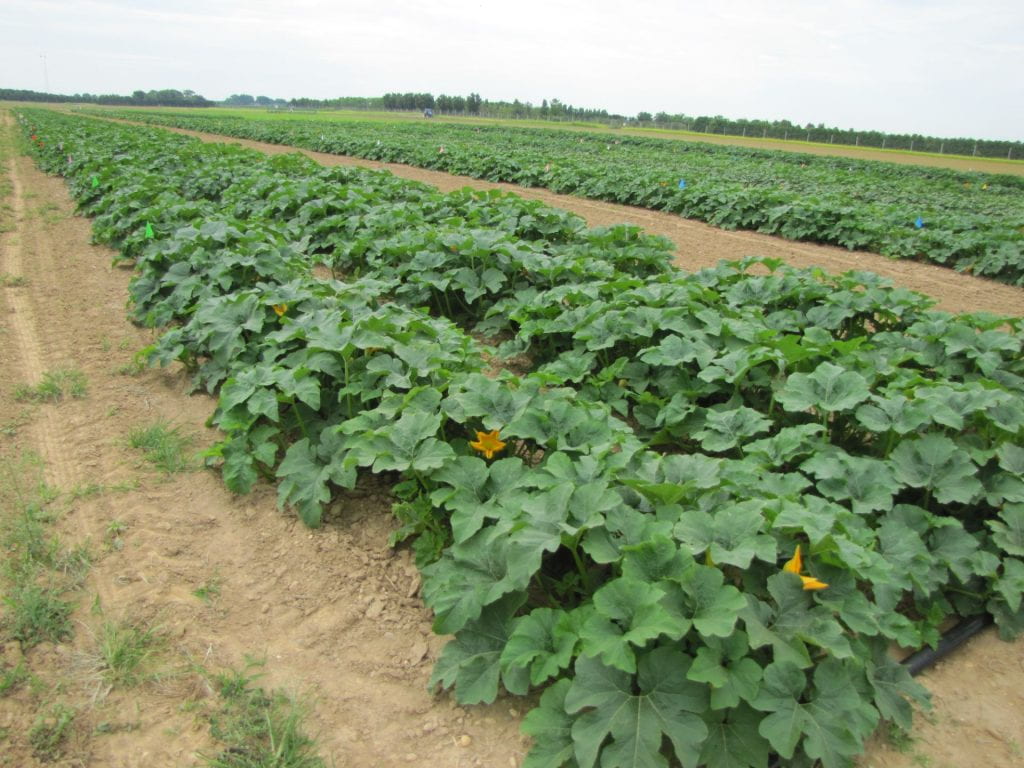
The following photos taken on 7 September, 2 days before 8th (last) fungicide application.
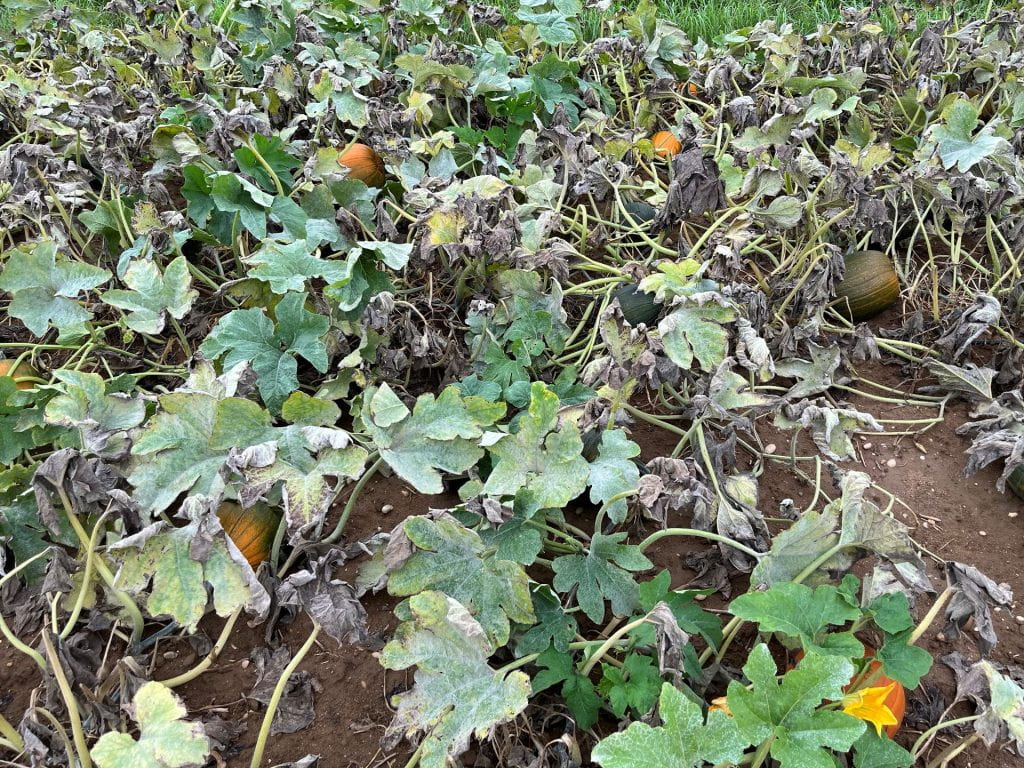
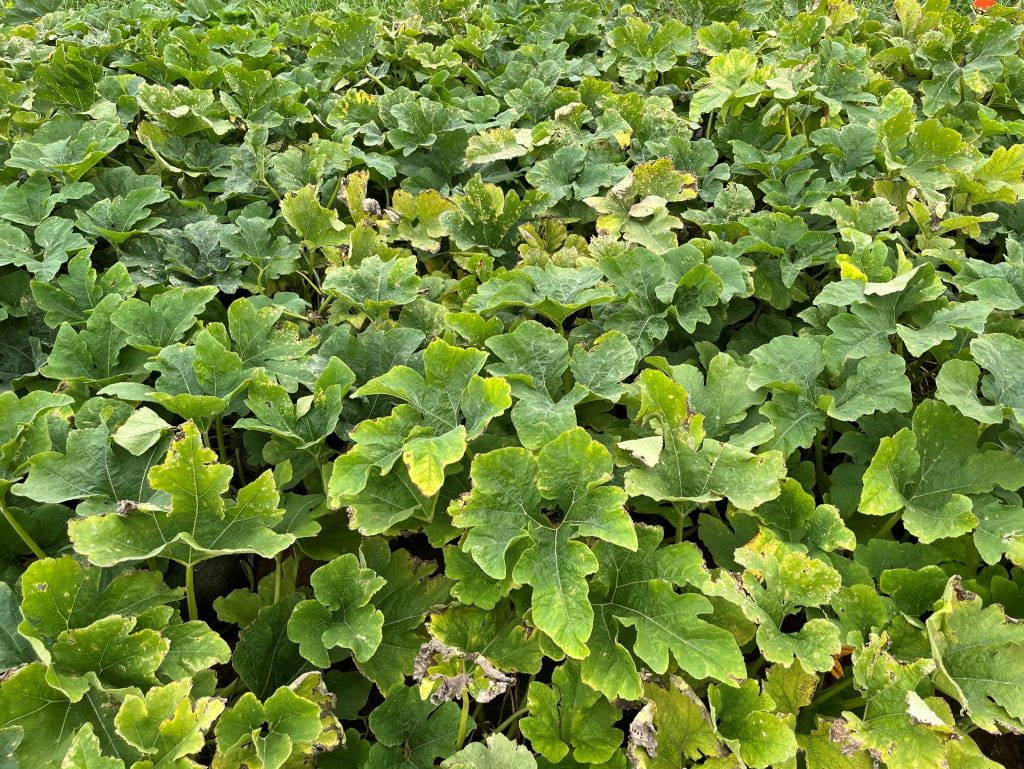
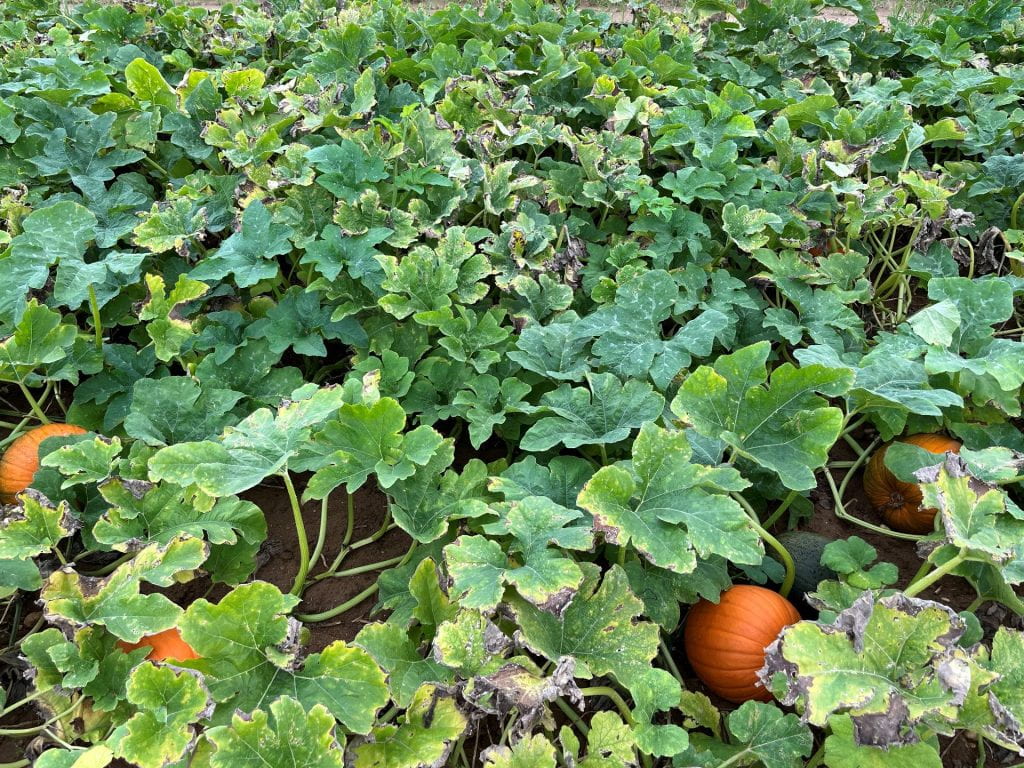
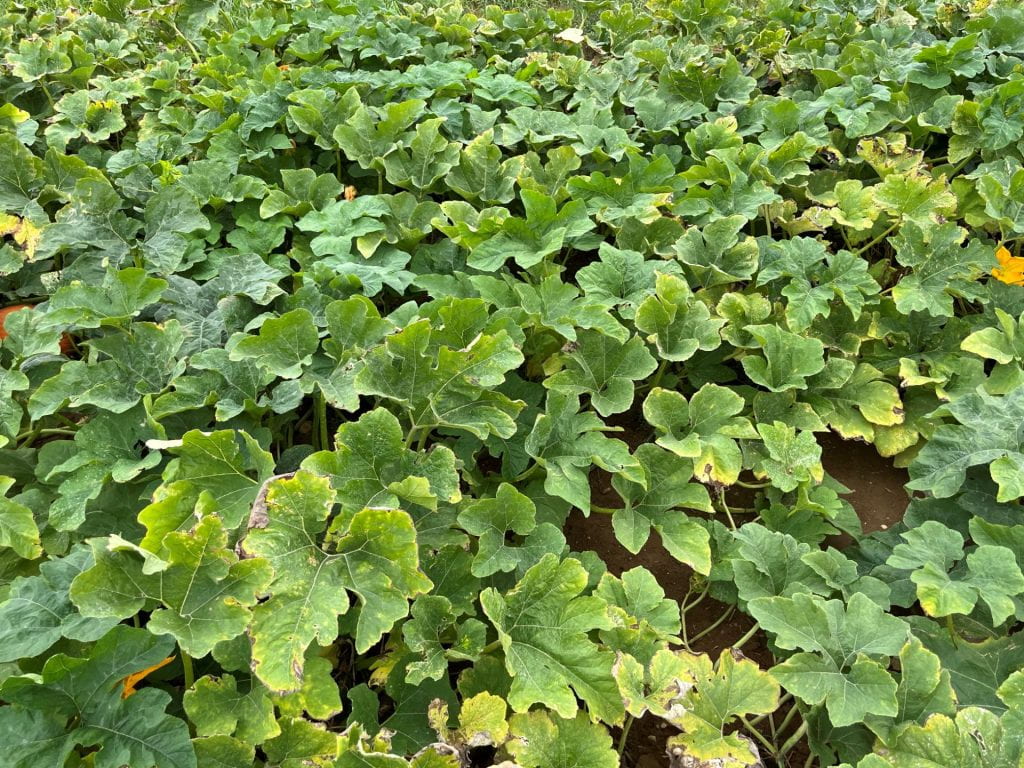
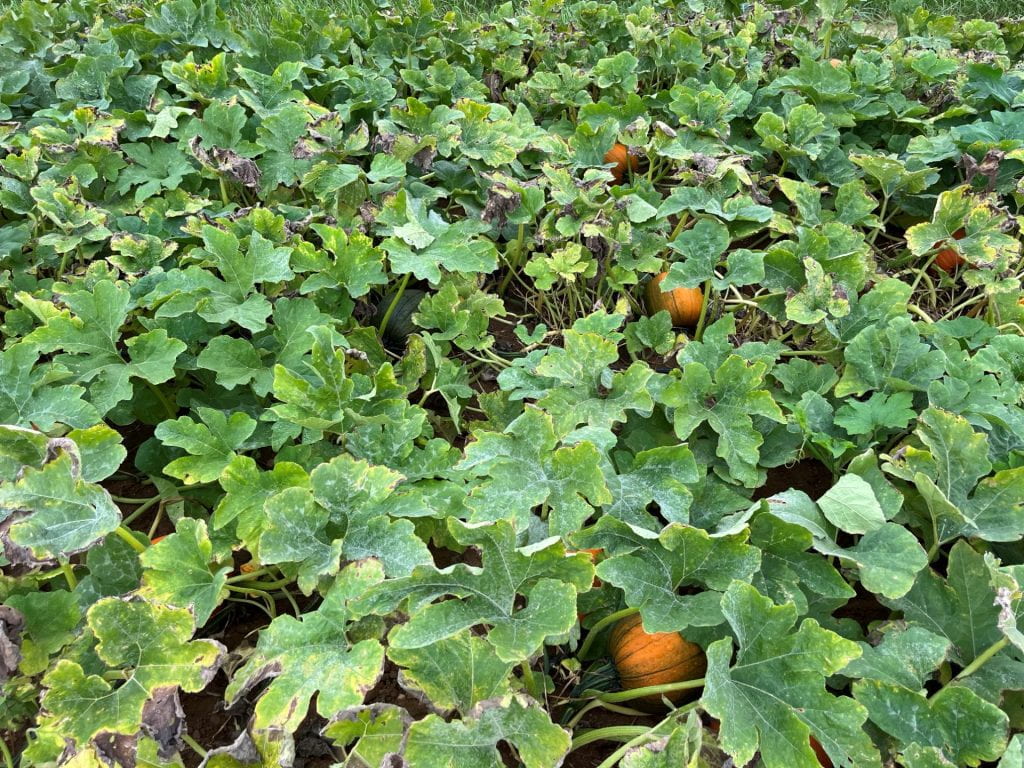
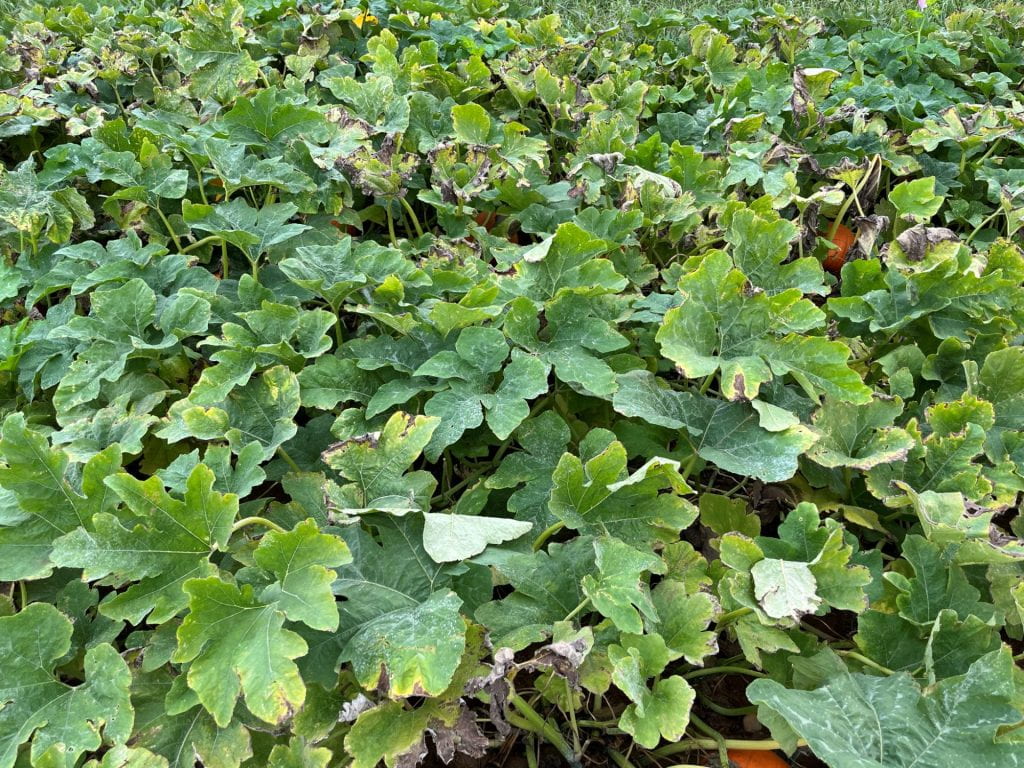
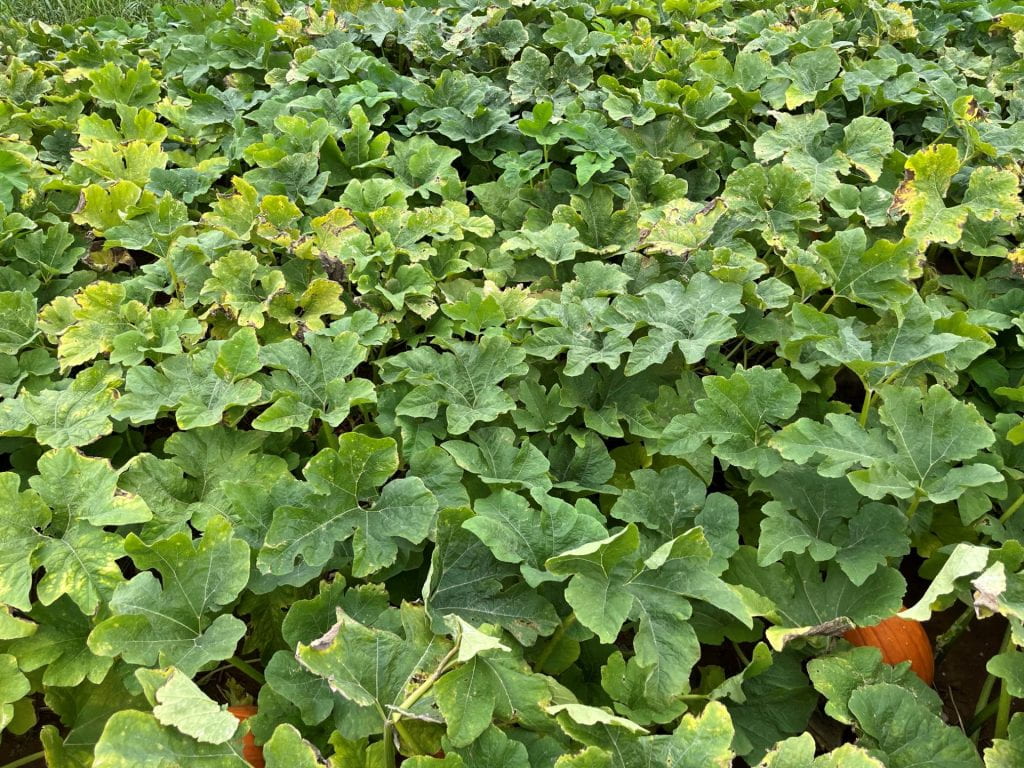
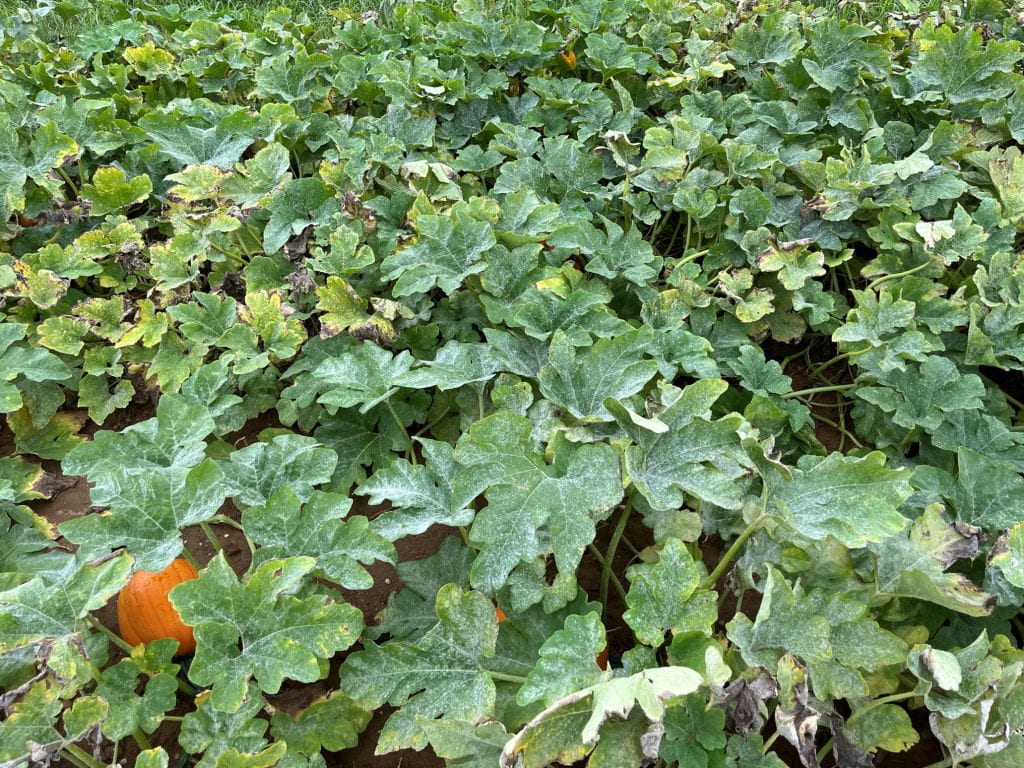
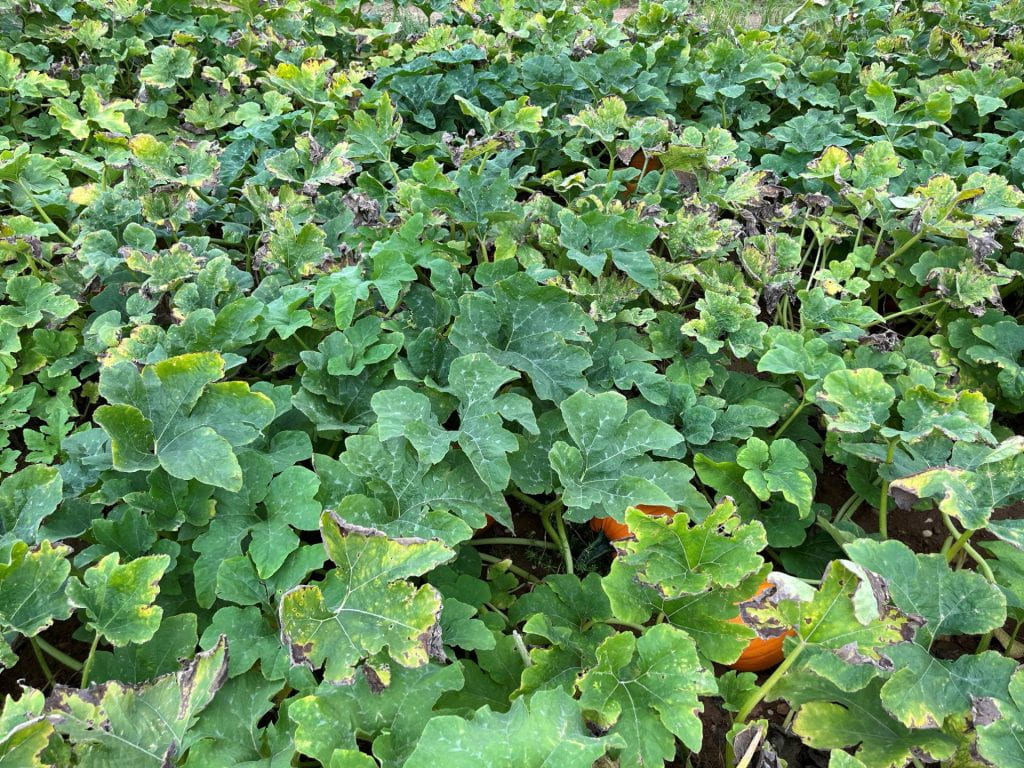
The following photos taken in the same plots on 12 September, 3 days after 8th (last) fungicide application.
